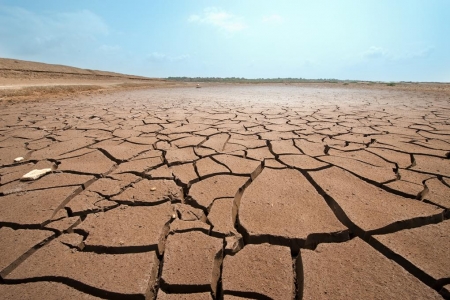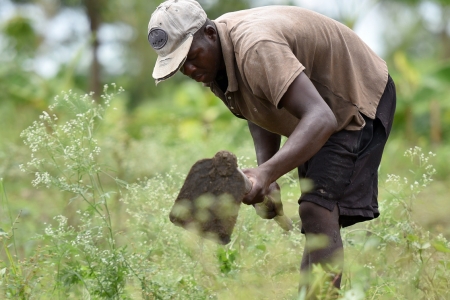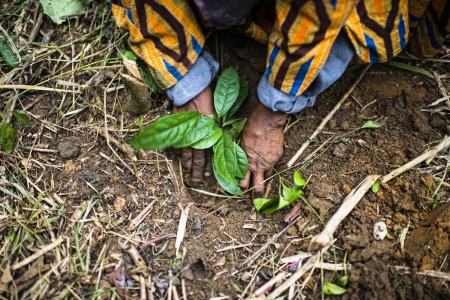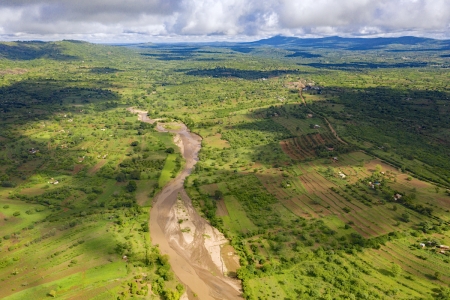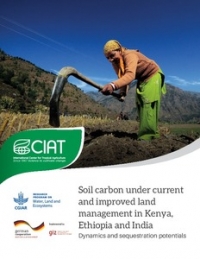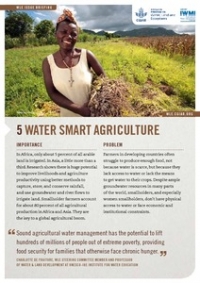ICRAF/WLE scientist co-leads authorship of major report: Recommendations accepted by 122 countries
Capturing carbon in agricultural soils can significantly reduce atmospheric greenhouse gasses while improving soil quality for farmers. But where and how can we best capitalize on this opportunity has always been the challenge. Now, at least 122 countries are stepping up national and global efforts.
A major new United Nations Convention to Combat Desertification (UNCCD) technical report, Realising the Carbon Benefits of Sustainable Land Management Practices: Guidelines for Estimation of Soil Organic Carbon in the Context of Land Degradation, provides decision guidance for governments and other land managers. Member countries have already agreed to accept most of the recommendations, with some modifications.
The report, released this month at the UNCCD Conference of Parties (COP) 14, provides guidance for the estimation of soil organic carbon (SOC) to help decision makers deploy the most appropriate sustainable land management (SLM) technologies, in order to maintain or increase carbon in the soil.
“SOC is pivotal in providing multifaceted benefits,” said lead author Ermias Betemariam of World Agroforestry (ICRAF) and the CGIAR Research Program on Water, Land and Ecosystems in his presentation of the report at COP14. “The beneficial impacts on soil health and functionality include combatting droughts, reducing soil diseases and soil compacting, and helping in organic production.”
According to WLE/CIAT-supported research in Scientific Reports, by better managing farmland soil, carbon stored could increase an extra 0.9 to 1.85 gigatons each year – close to the amount omitted annually by the entire global transport sector.
SLM techniques such as composting, planting cover crops, mulching, zero tillage, agroforestry and other nature-based solutions are showing promise for increasing the amount of carbon stored in soils. Without these practices, farming often leads to the decay of much more organic material. This releases carbon into the atmosphere and removes vital nutrients from the soil, harming future crop yields.
These SLM techniques can also contribute to the achievement of land degradation neutrality (LDN) – a major focus of the report. Globally, 122 countries have committed to setting LDN targets, meaning ensuring land use choices do not further degrade the ecosystem services they provide, such as nutrient supply for plants, guarding against erosion, and water filtration. Every year the world loses up to 24 billion tons of fertile soil.
“The world has these interconnected problems of land degradation and climate change,” explains ICRAF/WLE’s Betemariam. “If we don’t act, we will compromise the ability of our food systems to meet future demand and continue expanding agriculture’s carbon footprint. In the report, we have come up with guidelines on how to monitor SOC and hopefully, the member parties will use them in their LDN targets.”
The report recommends various steps policy makers and practitioners can take to support soil carbon capture. As summarized in the report’s Policy Brief, the scientists urge decision makers to:
- Focus SOC measurement on sites where SOC is the key indicator (e.g. in croplands and grazing lands where specific land degradation processes are not readily reflected in trends in land cover and land productivity);
- Use national/local data and local expertise to apply SOC tools/models for SOC assessment for estimation and monitoring. There are several free global datasets that offer soil SOC information that may be suitable, depending on the level of certainty required;
- Combining measurement and tools/models for SOC assessment can be an efficient and robust approach to minimize cost: use measurement to establish the baseline;
- Use SOC estimation tools to choose appropriate SLM practices, suited to the local context;
- Encourage gender-responsive actions to promote gender equality by including gender equality in the preliminary LDN assessment as well as developing criteria to evaluate gender balance;
- Target application of SLM practices (policies, strategies, approaches, and technologies) to maintain or increase SOC, to achieve LDN and multiple benefits at landscape and national level, and
- Assess co-benefits and trade-offs between ecosystem services provided by land, to contribute to the evidence base of quantified examples of the multiple benefits of SLM.
(Source: UNCCD Science Policy Brief: Tools for Soil Organic Carbon Estimation and Management)
The recommendations were officially accepted by UNCCD members at the meeting, with some modifications. The authors hope to see actions rolling out over the coming months.
Betemariam co-led a team of global scientists to develop the technical report and policy brief which the UNCCD Committee on Science and Technology used to produce a document for discussion by country delegates at the COP.
WLE, ICRAF and the International Center for Tropical Agriculture (CIAT) will continue working towards improved soil carbon sequestration in agriculture through promoting better land management, and by assessing the potential for carbon capture in Africa and beyond.


